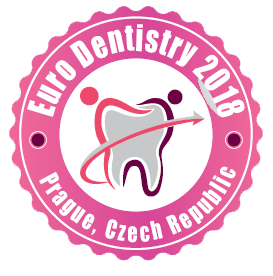
Minh-Huy Dang
Chonbuk National University, Republic of Korea
Title: Fluoride Release Ability of Different Restorative Materials After Short-term Fluoride Treatment
Biography
Biography: Minh-Huy Dang
Abstract
Fluoride-releasing materials have been widely used in dentistry because of their satisfactory esthetic properties, biocompatibility, and cariostatic properties. Furthermore, the recharge of fluoride from varying degrees of fluoride in oral hygiene products may contribute to the ability of these materials to provide a long-term caries inhibitory effect. However, little information is available on fluoride release ability of different restorative materials after short-term fluoride treatment, which simulates three times daily regular use of fluoride toothpastes or fluoride mouthwashes. The aim of this study was to evaluate the difference between fluoride releasing ability of different restorative materials before and after short-term fluoride treatment. Four restorative materials were used in this study: a fluoride-releasing composite resin (FRCR), a resin-modified glass ionomer cement (RMGIC), and two conventional glass ionomers cements (GIC). Each specimen was placed into artificial saliva (AS) and the initial fluoride ion release was measured for 10 days using a fluoride ion-selective electrode. After 10 days, each specimen was then treated with 1,000 ppm F- for 3 min. All treatments were applied three times a day for 4 days (a total of 10 times). After fluoride treatment, the amount of fluoride re-release was also determined during the experimental period. Collectively, restorative materials with higher initial release have higher recharge capability (RMGIC > GIC > FRCR). Each different restorative material has the capacity to re-release a constant concentration of fluoride ion for 1 hour after short-term fluoride treatment. Moreover, fluoride recharge ability may occur on outer surface of restorative materials than inner surface.

